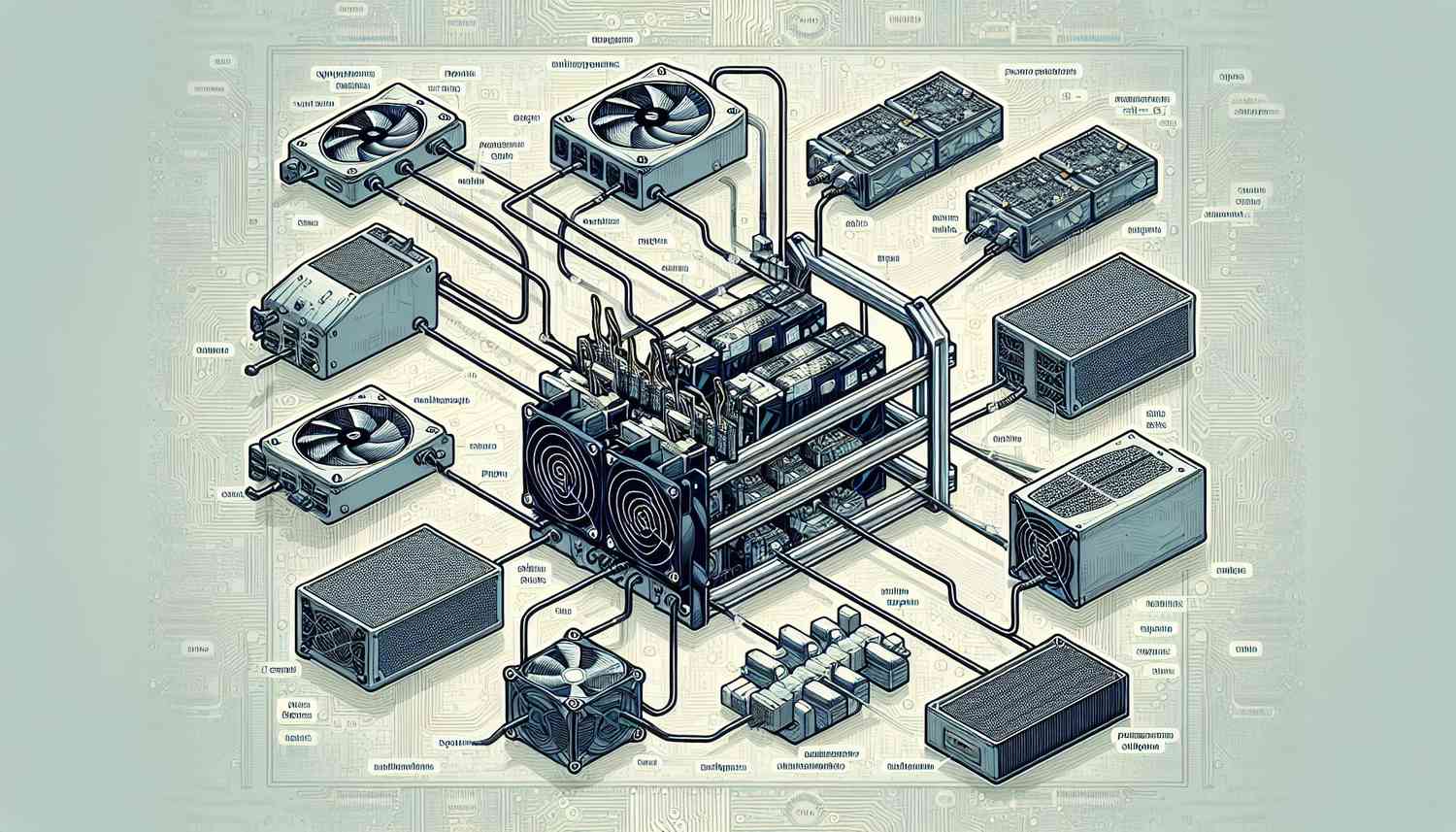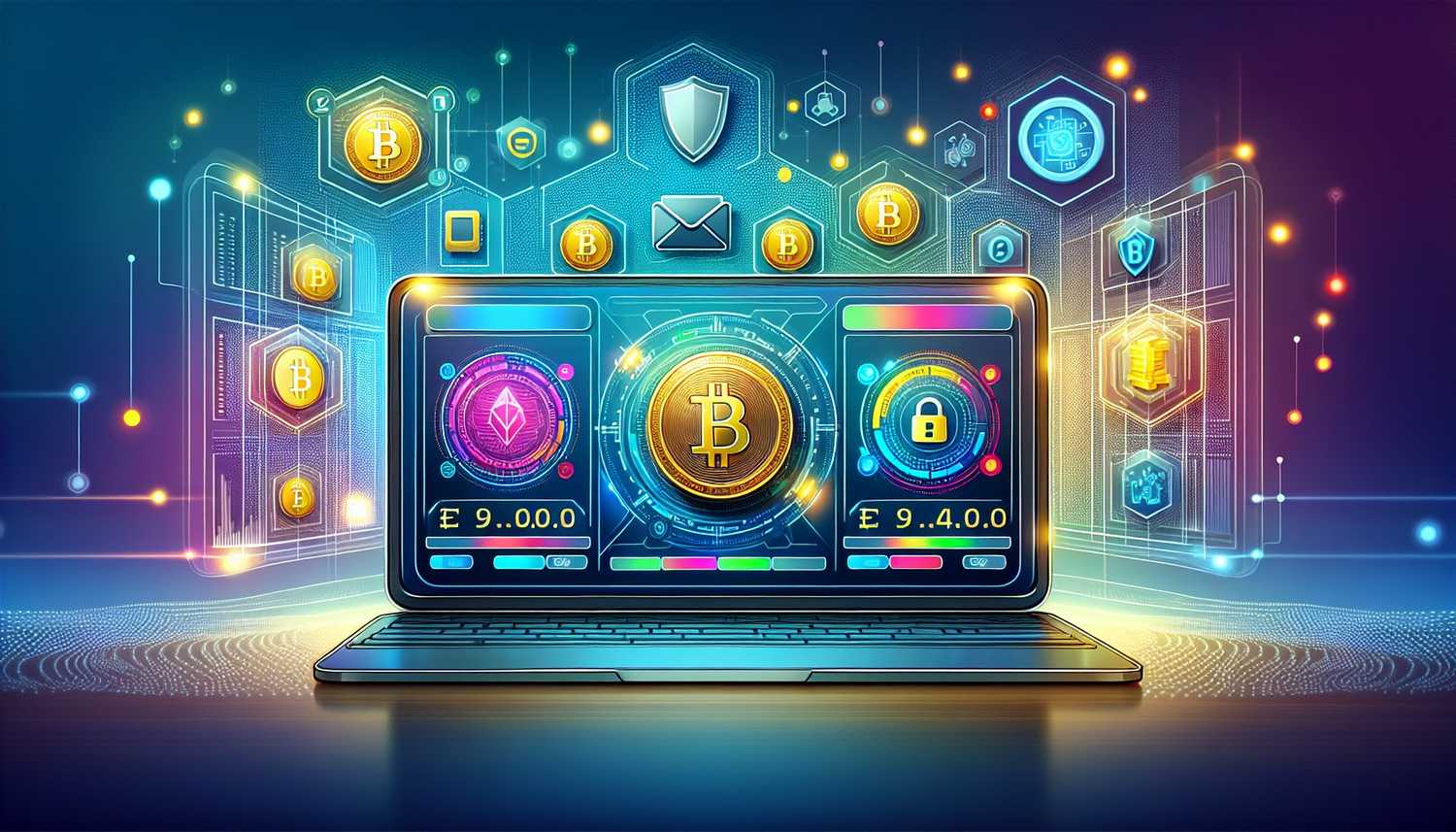To mine cryptocurrency, you need specialized hardware, mining software, and efficient electricity management. This guide covers what do you need to mine cryptocurrency and provides a step-by-step approach to get started.
Key Takeaways
- Successful cryptocurrency mining requires powerful hardware, specialized software, and proper setup to validate transactions and earn rewards.
- Joining mining pools enhances the chances of profitability by pooling resources and sharing rewards among miners.
- Electricity costs significantly impact mining profitability, necessitating careful management and optimization of energy consumption.
What Do You Need to Mine Cryptocurrency? Your Essential Guide

Mining cryptocurrency, particularly Bitcoin, demands more than just enthusiasm. It requires powerful computing power, sophisticated mining equipment, and specialized software to solve complex mathematical puzzles. The primary goal of Bitcoin mining is to validate bitcoin transactions and add new blocks to the blockchain, a process that involves solving cryptographic puzzles using dedicated hardware and software.
Bitcoin transactions are validated through blockchain technology, eliminating the need for intermediaries and ensuring security through decentralization and cryptography. These transactions cannot be reversed or canceled, further distinguishing them from conventional banking transactions.
Miners are rewarded with new coins for their efforts, with each mined block typically resulting in a reward of 6.25 bitcoins. This process not only secures the network but also introduces new bitcoins into circulation, allowing users to mine bitcoin effectively and earn mining rewards.
However, the journey to successfully mining Bitcoin is fraught with challenges, including high initial capital investment and the rapid evolution of technology. Let’s delve deeper into the world of Bitcoin mining and explore what it truly entails.
Introduction
Cryptocurrency mining is the process of validating transactions on a blockchain network, an essential task that ensures the security and integrity of the blockchain.
To engage in this process, miners need specific hardware like GPUs, CPUs, or ASIC miners, along with mining software to connect their hardware to the cryptocurrency network. Each validated transaction and successfully mined block contributes to the robustness of the blockchain.
Choosing the right cryptocurrency to mine and understanding the dynamics of mining pools can significantly improve your chances of profitability. Pooling resources allows individual miners to combine their computing power for more efficient mining, with proportional reward sharing. But also bring centralization risks to the blockchain.
This guide provides insights into the components and strategies crucial for a successful mining venture.
Understanding Cryptocurrency Mining
At its core, Bitcoin mining involves solving complex mathematical puzzles to validate transactions and add new blocks to the blockchain. Bitcoin transactions are validated through blockchain technology, eliminating the need for intermediaries and ensuring security through decentralization and cryptography.
This process requires powerful computing power and sophisticated equipment, often housed in dedicated mining rigs. The primary purpose of Bitcoin mining is not just to earn rewards but to ensure the security and integrity of the blockchain by validating transactions.
Miners are rewarded with new bitcoins for successfully mining a block, with the bitcoin network creating a new block approximately every ten minutes. These transactions cannot be reversed or canceled, further distinguishing them from conventional banking transactions. This reward system incentivizes miners to continue securing the network.
The increasing difficulty of mining puzzles and competition among miners necessitate having the right tools and strategies for success.
Essential Hardware for Mining

The backbone of any successful Bitcoin mining operation is its hardware. Over the years, the evolution of mining methods has shifted from CPU mining to more efficient GPU and application specific integrated circuit mining. ASIC miners, in particular, are more power-efficient and are the preferred choice for serious Bitcoin miners due to their specialized nature.
A mining rig, which is a specialized computer system, often comprises multiple GPUs to maximize processing power. Key components of a mining rig include a motherboard, CPU, RAM, power supply unit, and storage. High-end GPUs, typically from manufacturers like AMD and NVIDIA, are crucial for efficient mining, though they come with a higher initial cost.
As mining difficulty increases, the need for advanced and efficient hardware becomes more critical. Mining with a regular PC is generally not profitable, making specialized mining hardware a necessity for those serious about their mining endeavors. Assembling and configuring your mining rig properly ensures optimal performance and profitability.
Mining Software Setup

To embark on your mining journey, having the right mining software is just as crucial as the hardware. This software connects your mining rig to the cryptocurrency network and manages the mining process. Downloading mining software from official sources helps avoid malware and ensures security.
Popular mining software options include EasyMiner, designed for users without a technical background, and Multiminer, which offers an intuitive interface for newcomers. For experienced miners, BFGMiner and CGMiner provide advanced features and customization options, including bitcoin mining software.
The choice of software should be compatible with your mining hardware and the specific blockchain you aim to mine.
Choosing a Cryptocurrency to Mine
Not all cryptocurrencies are created equal when it comes to mining. Some, like Monero, have algorithms that resist ASIC mining, making them more accessible for CPU and GPU miners. Choosing a cryptocurrency to mine involves considering factors like mining difficulty and market value.
Researching the effectiveness and profitability of different coins is crucial. While Bitcoin remains a popular choice, exploring other cryptocurrencies might offer better opportunities depending on your mining setup and goals.
Diversifying mining efforts mitigates risks and optimizes returns.
Setting Up a Mining Rig
Setting up a mining rig involves more than just assembling hardware. Proper setup and configuration are crucial for optimal performance. Start by ensuring you have a strong power connection and adequate cooling, such as 120mm fans, to prevent overheating.
After assembling the hardware, install your operating system and mining software.
A stable internet connection is also essential to maintain consistent mining operations. Properly setting up your mining rig lays the foundation for a successful and profitable mining venture.
Joining a Mining Pool
Joining a mining pool can significantly enhance your chances of mining success. By combining the computational power of multiple miners, mining pools increase the likelihood of finding blocks and provide a more predictable income stream. This collaborative approach helps spread risks and lower costs.
Different mining pools offer various reward systems, such as Pay-Per-Share (PPS), Proportional (PROP), and Pay-Per-Last-N-Shares (PPLNS). Choosing the right pool and understanding its reward system is crucial for optimizing your earnings. For instance, joining a pool for Dogecoin can leverage larger processing power and speed, leading to higher returns.
Joining a mining pool requires suitable Bitcoin mining hardware. Create an account with the pool, connect your hardware, and assign worker names to your devices. This organized approach ensures efficient and effective participation when you join a mining pool.
Mining pools do come with some concernce, as Heidi covered in this video
Managing Electricity Costs
Electricity costs are a significant factor in determining the profitability of Bitcoin mining. The substantial energy consumption required for mining can often exceed the energy usage of entire countries. Evaluating and optimizing energy consumption is vital for cost-effective mining operations.
Energy efficiency measures, like proper ventilation, can reduce unnecessary power consumption. Using Time-of-Use pricing to schedule mining operations during off-peak hours can also help save on electricity costs.
Exploring renewable energy sources and leveraging government incentives can reduce reliance on high-cost electricity.
Wallets for Storing Mined Cryptocurrency

Once you’ve mined cryptocurrency, securely storing it is crucial. There are various types of wallets available. They include software wallets, hardware wallets, and paper wallets. Each type offers varying levels of security and convenience, so choose based on your needs and preferences.
For Bitcoin mining, having at least one secure Bitcoin wallet is crucial. Securing your wallet protects mined cryptocurrency from theft and cyber threats. Explore options like the Dogecoin core wallet for Dogecoin mining earnings or the Monero GUI client for storing mined Monero.
Watch: What Is Monero (XMR): Complete Beginners Guide
Monitoring and Maintaining Your Mining Operation
Effective monitoring and maintenance are key to a successful mining operation. Mining software like Awesome Miner allows for managing and monitoring multiple mining rigs, supporting various Antminer models, and providing automation features to address issues efficiently.
Automation features in Awesome Miner, such as defining triggers for actions like rebooting or changing mining pools, enhance operational flexibility. Regular maintenance and optimization significantly improve mining efficiency and profitability.
Cloud Mining as an Alternative
For those who prefer not to invest in physical hardware, cloud mining offers an alternative. Cloud mining allows individuals to mine cryptocurrencies using services provided by remote data centers, eliminating the need for personal hardware and technical expertise.
Be aware that many cloud mining offers are scams. Additionally, cloud mining centralizes the mining process, which goes against the decentralized nature that many cryptocurrencies aim to uphold. Carefully evaluating cloud mining services helps avoid potential pitfalls.
Legal and Regulatory Considerations
Navigating the legal and regulatory landscape of cryptocurrency mining can be complex. Regulations vary significantly across the globe, affecting how miners operate legally. For instance, in the United States, cryptocurrencies are not recognized as legal tender, but exchanges must comply with federal regulations.
Other countries, like Japan and Australia, have specific frameworks for regulating cryptocurrencies, treating them as legal property or imposing capital gains tax. Complying with local regulations ensures the legality and sustainability of mining operations.
Calculating Mining Profitability
Calculating bitcoin mining profitable is a critical step before starting your mining venture. Investing in high-quality hardware and understanding its efficiency maximizes returns. Tools like Bitcoin mining calculators can help estimate potential earnings based on hardware specifications and power costs.
Factors affecting mining profitability include electricity consumption, hardware quality, market competition, and the current price of Bitcoin. Regularly updating calculations as cryptocurrency prices fluctuate is essential for accurate profitability determination.
Common Challenges in Crypto Mining

Crypto mining comes with its own set of challenges. Increased competition among miners can make it difficult for small miners to compete profitably. Additionally, miners are responsible for verifying transactions, ensuring the security and integrity of the blockchain.
Addressing these challenges requires strategic planning and adaptation to technological advancements and market conditions. Joining mining pools and investing in efficient hardware can mitigate challenges and improve mining success.
Scaling Up Your Mining Operation
Scaling up from a home-based setup to a larger operation involves significant investment in hardware and infrastructure. Larger operations may need dedicated facilities with enhanced cooling systems and power supplies to optimize performance.
Tools like Awesome Miner can manage multiple mining rigs and pools from a single dashboard, making it easier to handle larger operations. However, scaling up also presents challenges such as increased electricity consumption and heat generation. Careful planning and efficient management strategies are crucial for successful scaling.
Summary
In summary, successful Bitcoin mining involves a combination of powerful hardware, efficient software, and strategic planning. From setting up your mining rig to joining a mining pool and managing electricity costs, each step is crucial for maximizing profitability. Understanding the legal and regulatory landscape, as well as calculating profitability, ensures that your mining venture is sustainable and compliant.
As you embark on your mining journey, remember that continuous learning and adaptation are key to staying ahead in the competitive world of cryptocurrency mining. With the right tools and strategies, you can turn your mining efforts into a profitable and rewarding endeavor.
Curious about mining cryptocurrency but don’t know where to start? Join our crypto club community! Get exclusive tips, step-by-step guides, and expert insights to kickstart your mining journey.
Frequently Asked Questions
What is the primary purpose of Bitcoin mining?
The primary purpose of Bitcoin mining is to validate transactions and add new blocks to the blockchain, thereby maintaining the security and integrity of the network. Through this process, miners also earn Bitcoin as a reward for their efforts.
What are the different types of mining hardware?
The different types of mining hardware comprise CPUs, GPUs, and ASIC miners, each offering distinct efficiency and power consumption levels. Selecting the appropriate hardware type is crucial for optimizing mining success.
How can I reduce electricity costs in Bitcoin mining?
Reducing electricity costs in Bitcoin mining can be achieved by implementing energy efficiency measures, utilizing Time-of-Use pricing, and exploring renewable energy sources. This approach not only minimizes expenses but also promotes sustainable practices.
What are the benefits of joining a mining pool?
Joining a mining pool significantly increases profitability by pooling computational resources, which leads to a more stable and predictable income while also mitigating individual risks. This collaborative approach enhances the overall mining efficiency and rewards for participants.
What is cloud mining, and is it a good alternative?
Cloud mining enables users to mine cryptocurrencies remotely without personal hardware, but it often involves risks of scams and undermines the decentralized ethos of cryptocurrencies. Therefore, it may not be a reliable alternative for those seeking transparency and security in mining.


